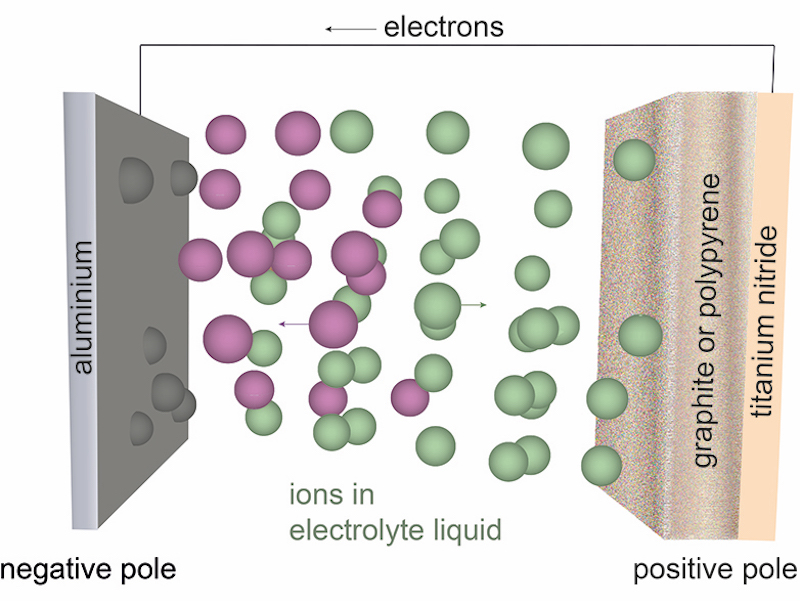For rather a long time various claims that some new game changing battery technology is just about to emerge. It is usually in the lab and so any day now it will rock up and change our world.
If you follow it all then you know how it often plays out. The initial excitement ends up getting scuppered by something. For example it can’t scale up, or is way too expensive to be commercially viable, or some technical challenge emerges, or … well you get the idea.
The best we have right now is lithium ion. That was the last big leap forward for batteries and since then all we have had are refinements. Yes, they catch fire if you overheat them, but that is rare enough to not be a huge concern. They do however require rare-earth minerals and that’s not great either. Is there a realistic hope for anything better?
I think there might indeed now be a good credible candidate for a potential leap forward for battery technology.
Graphene aluminium ion batteries with ultra-fast charging
Researchers have come up with what appears to be a game changer.
The essence of it all is this. Aluminum ions each carry three electrons, instead of one for lithium. The ions are the same size so in theory an aluminum ion battery is three times as powerful as a lithium ion battery. Aluminum is also common, very very common. It is the most abundant metallic element within the Earth’s crust – 1.59% to be precise.
An Aluminium Ion Battery ticks a lot of boxes …
- Very stable – as in not bursting in flames. That’s really cool … literally.
- Many more charge-discharge cycles compared to lithium, so will last a lot longer
- Can also be charged a great deal faster – about 20-70 times faster than a lithium battery.
But ….
Well yes, you did expect a “But”, right?
Aluminum ion batteries have a short shelf life. These have been great in the lab, but try to go commercial and alas it is game over.
But wait, this is not about Aluminium Ion batteries, but instead about “Graphene aluminium ion batteries”. That’s the game changer here. The combination of Graphene cracks that last shelf-life problem. This combination was described within this paper that was published within Nature Communications in Feb 2021 – Ultra-fast charging in aluminum-ion batteries: electric double layers on active anode.
But but but …
Yes, I know, you are by now thinking that we are once again back to the old story. It all looks exciting in the lab (it is), and so you might anticipate that what we face is perhaps hype for that, or hype to suck in early investors to enable them try to go commercial, then ten years later nothing will actually have happened.
Nope, this is different.
There is already a commercial organisation, the Brisbane-based Graphene Manufacturing Group (GMG). They have active plans and are very close to market. Via here, and also in Forbes here, we learn …
- Coin cells will be consumer tested later this year
- Pouch pack commercial prototype – used in mobile phones, laptops, etc … will be available for customer testing in 18 months
- EV Car batteries by 2024
What does this mean?
If it all pans out, then rather obviously you will be able to fully charge your iPhone in seconds and it will last three times longer.
Nice, but the real game changing status would be the EV market. It would have a profound impact that would tip that into full acceptance.
The best you can do now, unless you have a really big battery, is 200 to 300 miles. Yes, you can rapidly charge, but doing that really impacts battery life. Imagine being able to stop, go for a coffee and by the time you are back you are fully charged and ready to drive 600 or even 900 miles. It would be the end of EV range anxiety and truly be a tipping point for the EV revolution. Oh, and I almost forgot to mention, another big win is that these batteries would also be cheaper.
Reality Check
I was off on a bit of a dream there. However, I don’t think I am being too unrealistic. This appears to be way beyond being a pipe dream and a lot closer to actually becoming a real commercial product.
Sanity check: We are not there yet.
It is of course still possible that some horrendous unanticipated game-ending issue crops up and it never comes to market. On a scale of 1-10 where 1 is not a chance and 10 is total certainty, the evidence would tend to suggest we are at a 7 or if we are generous, an 8. I might of course be fooling myself here because like many, I really really would like to see far better batteries asap.
This is not the only possibility, it just happens to be the one with the most immediate potential.
